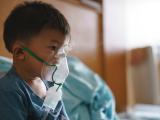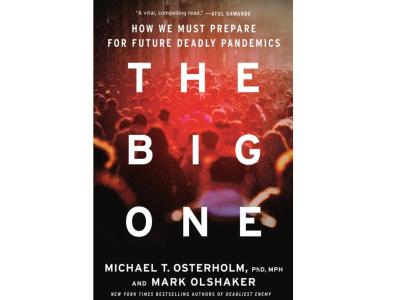Apr 16, 2008 (CIDRAP News) – Acting on the premise that "disasters discriminate," the Association of State and Territorial Health Officials (ASTHO) and several partner groups yesterday released a lengthy set of proposed guidelines for protecting the most vulnerable people during an influenza pandemic.
The 105-page document posted on the ASTHO Web site contains recommendations on how state, local, territorial, and tribal health agencies can prepare to help "at-risk" groups—such as people who can't afford to stockpile food, don't speak English, or need assistance with daily activities—get through a pandemic.
"In the face of a pandemic we have to recognize that some of those services that serve them [vulnerable groups] today may be able to expand to meet the need, but some of them will break down," ASTHO Executive Director Paul E. Jarris, MD, MBA, told CIDRAP News. "How will we provide basic services to people who are homebound, for example, making sure they have food and water and care? This won't happen by accident."
The guidance document, called "At-Risk Populations and Pandemic Influenza: Planning Guidance for State, Territorial, Tribal, and Local Health Departments," was developed with input from representatives of the groups the recommendations are intended to help. ASTHO and its partner organizations held public engagement meetings recently in Boston and Kansas City to gather those groups' suggestions.
"The At-Risk Populations Project is a ground-breaking endeavor for the nation,” Jarris said in a news release. “The process is being brought directly to the at-risk populations who will be affected, as well as to the public health planners and other experts who will have responsibility for implementing the policies. Their vital feedback will help to ensure that those facing the most danger during a pandemic are protected."
ASTHO's partners in the project are the University of Minnesota Center for Infectious Disease Research and Policy (CIDRAP), publisher of CIDRAP News; the National Association of County and City Health Officials (NACCHO); and The Keystone Center. The Centers for Disease Control and Prevention (CDC) proposed the project and funded it with a grant to ASTHO.
ASTHO seeks public comments
ASTHO is inviting the public to comment on the guidance document for 30 days. After that, plans call for editing the document and releasing the final version by May 31, according to Anna DeBlois, ASTHO's senior director for immunization and infectious disease. The project has been on a tight schedule because of CDC budgetary considerations, said Jarris.
The guidance consists of five chapters that discuss how to identify and collaborate with at-risk populations, communicate with and educate them about pandemic flu, provide clinical and non-clinical services to them, and how to test, exercise, measure, and improve their preparedness.
At-risk groups are defined as those that have the highest risk of suffering severe consequences from a pandemic or from measures used to fight the pandemic, such as community mitigation strategies. Examples include those who can't afford to stockpile food or stay home from work for even a short time; those who have no support network, such as homeless people and those who are socially or geographically isolated; and those who need help with daily activities because of physical disabilities, blindness, hearing impairment, medical conditions, or other factors.
Each chapter offers detailed background information and a list of recommendations for public health agencies. For example, a section on communicating with at-risk groups discusses potential barriers to communication, the need to develop audience-appropriate messages, possible message content, and the need to find "trusted messengers." The chapter suggests a wide variety of potential message vehicles, ranging from church bulletins and radio announcements to cars with loudspeakers and "telenovelas," described as Spanish television mini-series that can be powerful health education vehicles.
A few other examples of the many recommendations in the guidance:
- To identify at-risk groups, use data from transportation and mass-transit planners to find local groups who need help to use public transit.
- To build collaborations, reach out to community leaders without formal roles, such as elderly people or hairdressers.
- Offer mini-grants to community-based and faith-based organizations for pandemic preparedness planning, if budgets permit.
- Provide preparedness workshops for people who support at-risk individuals, including family, friends, and paid caregivers.
- Encourage community-based and faith-based organizations to develop contracts or memoranda of understanding to provide essential services and supplies during a pandemic.
- Consider the pros and cons of developing a community registry in which at-risk groups would describe the services and equipment they would need during a pandemic, and work with first responders to make sure the registry provides them useful information.
Each chapter also includes a chart of existing tools and resources—most of them accessible online—that may be helpful in carrying out the recommendations.
Developing federal guidance outside the government
ASTHO officials credit Toby Merlin, MD, deputy director of the CDC's Influenza Coordinating Unit, for coming up with the idea for the At-Risk Populations Project, which they describe as unique because it is federal guidance developed by non-federal groups.
"Toby Merlin came to us to ask ASTHO to organize, with CIDRAP and Keystone, a process for developing guidance outside the federal government, and also including the very important component of community engagement," said Jarris. "We've had community engagements around pandemic community mitigation measures and vaccine prioritization before, but what was really new was moving the engagement outside the federal government."
ASTHO set up an advisory panel of experts to guide the project and organized five working groups consisting of about 70 people, including academicians and public health practitioners, from around the country to develop the chapters. To get at-risk groups involved, public engagement meetings were held Mar 8 in Boston and Mar 15 in Kansas City, drawing a total of more than 100 people. In addition, a stakeholders meeting was held Mar 20 in Washington, DC, to gather input from groups ranging from the CDC to volunteer organizations that serve vulnerable people.
Comments gathered at the meetings led to various additions and adjustments to the guidance, according to Caroline Barnhill, MPH, ASTHO's senior analyst for infectious diseases. One important point influenced by the feedback was the definition of at-risk groups.
"We asked if the groups we had identified were sufficient, and they had some thoughts on the words we used," Barnhill said. "We took that information into consideration and changed some of the wording to reflect their feedback. It was very helpful."
Overall, the comments didn't prompt any big changes in direction, but they "enhanced what we were already doing," Barnhill said. "We got a lot of good anecdotes and points that we hadn't thought of."
Public engagement
One of those who attended the Boston public meeting is David Mortimer, a Sudbury, Mass., resident who has been in a wheelchair since he was injured in a car accident in 1993. He chairs the city's disability commission and represents that group on the city emergency planning committee.
"My intent [in attending the meeting] was hoping I would find people similar to myself and find out what success they were having in convincing commissions to be more inclusive in their emergency planning," Mortimer told CIDRAP News.
He said the Boston meeting, held at Boston University, drew at least 50 people, consisting mostly of people with limited mobility, those with hearing impairments, and people working with the homeless and those with mental health problems.
After being briefed on the project, those attending broke into subgroups and, with the help of facilitators, came up with the suggestions for things to include in the guidance. "There was something in the neighborhood of 15 recommendations that were brought to the full group for comment and feedback," Mortimer said.
He said he was impressed by "the willingness to work from the ground up, not coming in and dictating what people need but going out and asking the affected groups what are their major needs regarding treatment in a pandemic. The process is remarkable and hopefully will be a model."
Mortimer also attended the Washington stakeholders meeting after he was asked to report there on the Boston meeting. In the wake of the meetings, he said, "I think I'll be bringing a lot more focus to our local emergency planning people about pandemic flu."
He said it was hard to tell how well local planners would heed concerns about pandemic preparedness, since Sudbury is small and has no public health department. "It'll get added to the many things that I'm a voice crying in the wilderness about," he said.
Filling a need
Various groups have recognized a need for guidance to help protect vulnerable people during a pandemic and have worked on aspects of the problem, but there has been no comprehensive effort until now, according to Jarris and DeBlois.
"There's a recognition that there's a huge need, but there's been a real gap in planning guidance for state and local agencies," said DeBlois. "This project really fills that gap and provides consistent guidance to all the states as to what the best practices and key recommendations are."
The large number and variety of groups that serve vulnerable people made development of the guidance a complex challenge, said DeBlois.
"There's such a huge network of organizations and individuals that serve at-risk populations that it all works together right now like a web of different agencies that are truly the most connected to these folks," she said. "Understanding how that works and what would need to happen to ensure that at-risk populations continue to be served in such an intense public health emergency was really challenging."
Jarris said he couldn't predict to what extent public health agencies will use the guidance, but he expressed hope that it would induce them to build relationships with vulnerable groups.
"I think there are people who are very hungry for guidance around this [issue]," he said. "So much of this work is building relationships with people in the community and those who are serving them that guidance is only the beginning. . . . There's no substitute for getting out there and building those relationships."
See also:
Full text of "At-Risk Populations and Pandemic Influenza: Planning Guidance for State, Territorial, Tribal and Local Health Departments"
http://www.astho.org/Programs/Infectious-Disease/At-Risk-Populations/At-Risk-Pop-and-Pandemic-Influenza-Planning-Guidance-Executive-Summary/
ASTHO's At-Risk Populations Project site
http://www.astho.org/Programs/Infectious-Disease/At-Risk-Populations/At-Risk-Populations-Project-Methods,-Timeline,-Advisory-Panel-Members,-and-Project-Staff/




















